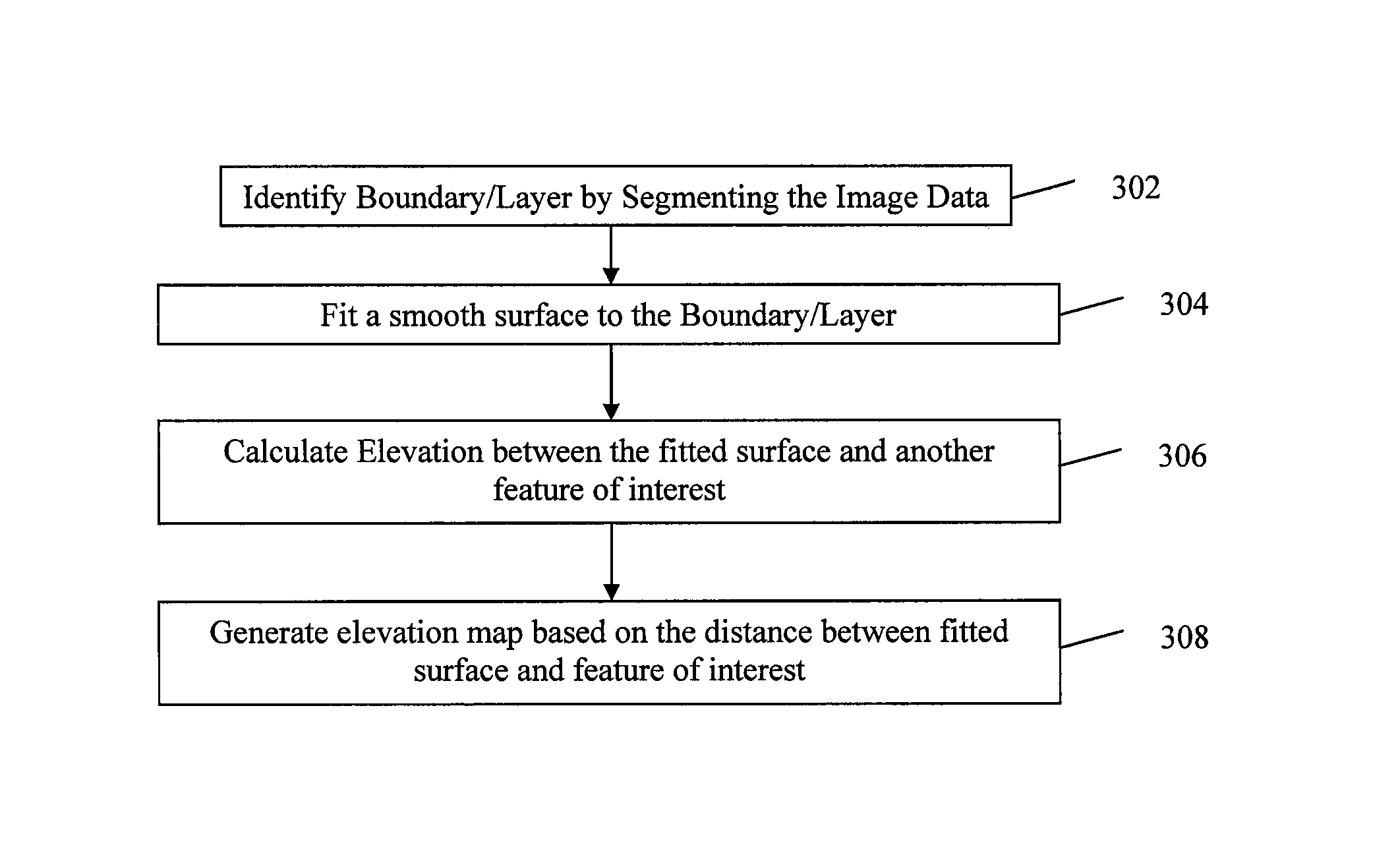Method of bioimage data processing for revealing more meaningful anatomic features of diseased tissues
a bioimage and data processing technology, applied in image enhancement, instruments, applications, etc., can solve the problems of abnormal thickness of retina, abnormal overall contour of retina, and thin retina
- Summary
- Abstract
- Description
- Claims
- Application Information
AI Technical Summary
Benefits of technology
Problems solved by technology
Method used
Image
Examples
Embodiment Construction
[0026]FIG. 3 shows one preferred embodiment the presently invented method. This method is intended to be used on image data obtained from a sample. The illustrations in this application are based on image data derived from an optical coherence tomography system (OCT) which includes both time domain and spectral domain OCT systems. Such an instrument generates 3D intensity data corresponding to an axial reflection distribution arising from reflecting features in the eye. As noted above, this information is currently used by doctors to view and diagnosis various pathologies in the eye. A basic OCT system will be discussed below.
[0027]Although the illustrated embodiments are limited to OCT data, the image processing concepts described herein may be used with 3D image data derived from other modalities. For example, image data may be created using various forms of confocal microscopy and even ultrasound imaging modalities.
[0028]The first step in the subject method requires identificatio...
PUM
 Login to View More
Login to View More Abstract
Description
Claims
Application Information
 Login to View More
Login to View More - R&D
- Intellectual Property
- Life Sciences
- Materials
- Tech Scout
- Unparalleled Data Quality
- Higher Quality Content
- 60% Fewer Hallucinations
Browse by: Latest US Patents, China's latest patents, Technical Efficacy Thesaurus, Application Domain, Technology Topic, Popular Technical Reports.
© 2025 PatSnap. All rights reserved.Legal|Privacy policy|Modern Slavery Act Transparency Statement|Sitemap|About US| Contact US: help@patsnap.com



